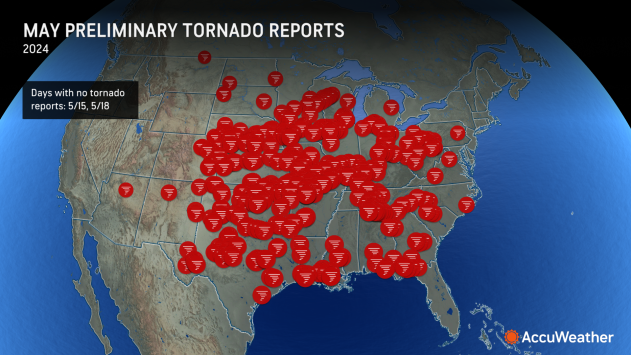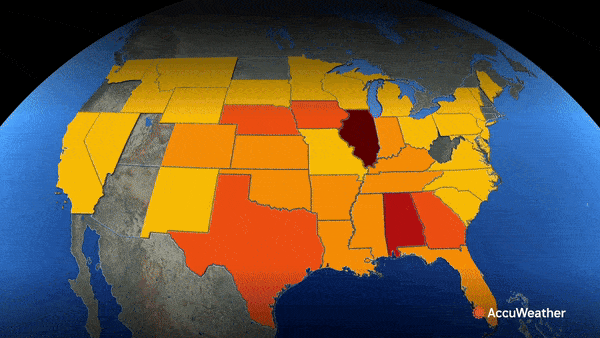Hyperactive tornado year continues after near-record May
A hyperactive May produced hundreds of twisters in the Plains and Midwest. While final numbers won't be out until later this month, 552 preliminary tornado reports could break the record, with the previous record being 550 in May 2003, according to the National Climatic Data Center.
 |
This year has produced over 1,100 preliminary tornado reports, far above the historical average of 767 through May 31. That's 39% more than in 2023 at this date. Only two other years reached the 1,000 mark by the end of May: 2011 with 1,238 and 2008 with 1,005.
This year, tornadoes have been reported in every continental U.S. state except Nevada, Idaho, New Jersey, Delaware and the New England states. Texas has had the most reports, as it typically does due to its size, with 112. Iowa is not far behind at 105 reports. Compare that to 2023, when the top two tornado states were Illinois and Mississippi, and neither state had over 100 reports.
 |
The Southeast has been notable for having fewer tornadoes so far this year. In 2023, Alabama and Georgia had more tornadoes than Oklahoma or Kansas. This year, the reverse has been true.
 |
The difference between the 2023 and 2024 tornado seasons results from differences in the jet stream patterns, AccuWeather Meteorologist Brandon Buckingham said.
"Storms require moisture and warmth to form," Buckingham explained. "Last year, the southern branch of the jet was more prevalent, which limited how far warm, moist air in the Gulf of Mexico moisture could reach northward. In 2024, the northern jet took over and unlocked energy from the Gulf."
Historically, June is the third-most active month for tornadoes across the United States, after April and May. Heading into the first full week of the month, Buckingham says the risk of more tornadoes will span a large swath of the central, southern and eastern United States as a multiday risk of severe weather gets underway. In the long term, AccuWeather expects the number of tornadoes to remain higher than the historical average in June.





